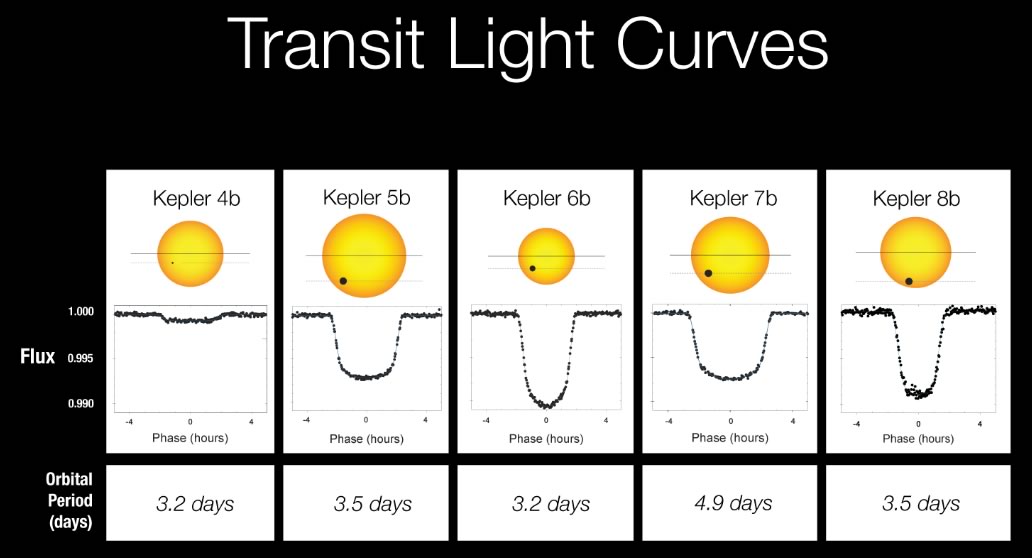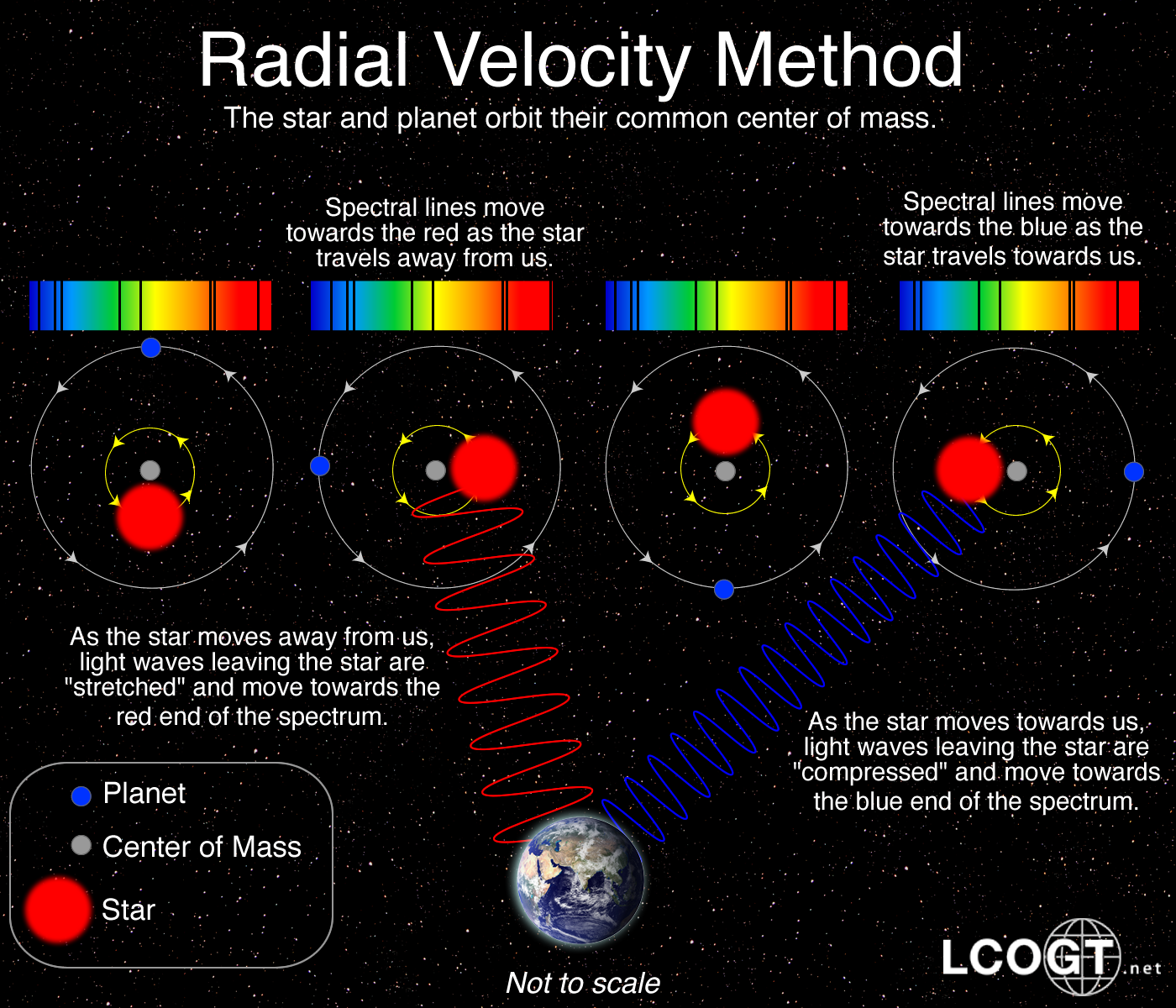What kind of object would best be identified by a periodic Doppler shift in a star’s spectrum along with a dip in the star’s light intensity?
1 Answer
A signal like that is a good indication of the existence of an orbiting exoplanet.
Explanation:
The Kepler Space Telescope was designed specifically to search for signals just like this one. It was pointed along the Orion arm of the milky way, and the light curve from individual stars is analyzed for evidence of planets.

When a planet passes in front of a star, it blocks a little bit of that star's light. By measuring how much the star dims, astronomers can infer the size of the planet. Additionally, the time between light dips tells us the orbital period of the planet. Incredibly precise measurements are needed to detect the light dips, since planets are much smaller than their stars, so they only block a small percentage of light.
Exoplanets also cause their parent stars to wobble as both the star and its planet orbit a mutual barycenter. Astronomer's measure this wobble using spectroscopy. As the star moves toward us in its orbit, the light will become blue shifted, and as the star moves away from us, it becomes red shifted. By calculating the speed of the stars orbit, astronomers can estimate the mass of the planet.

To date, Kepler has discovered over 1000 confirmed exoplanets, with thousands of additional candidates still being studied.

